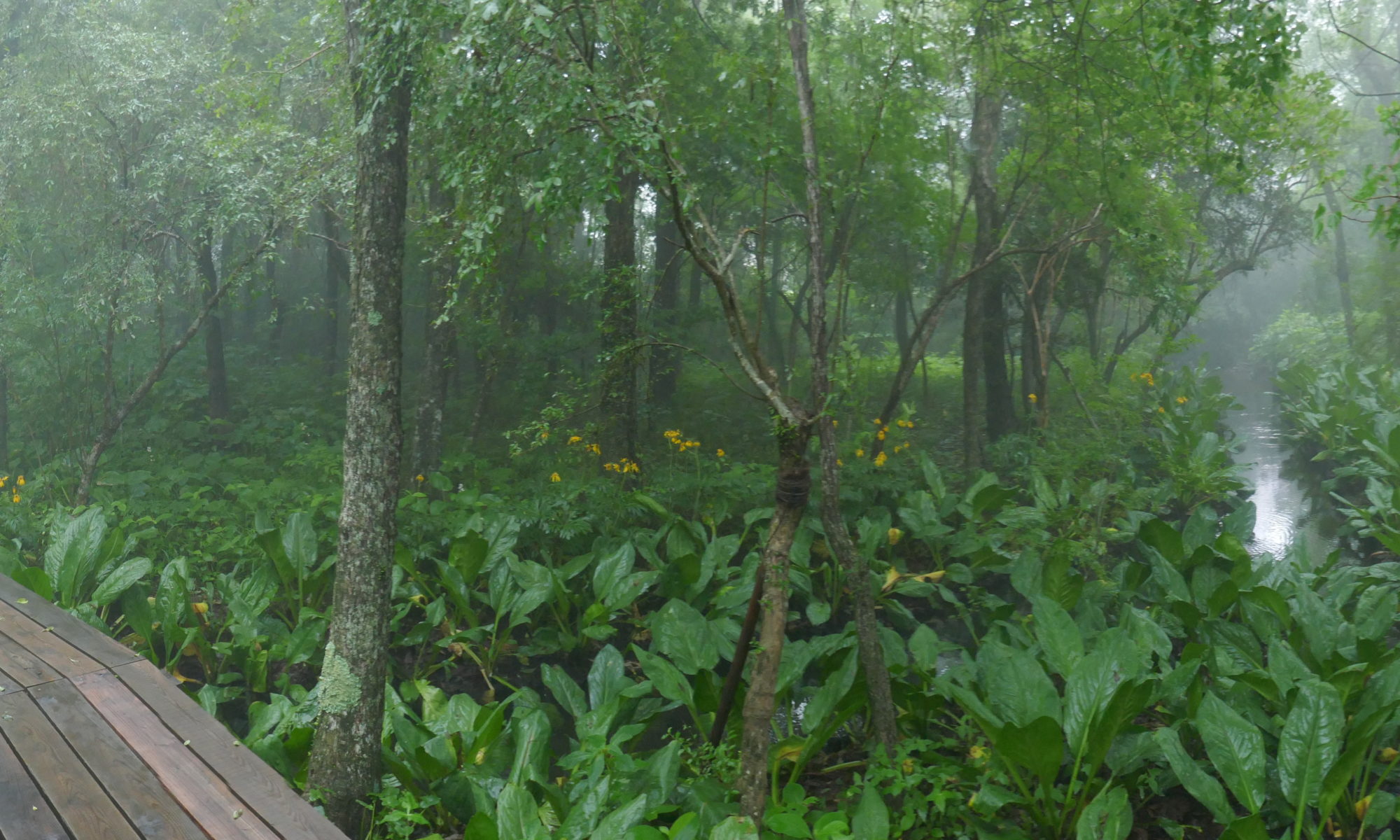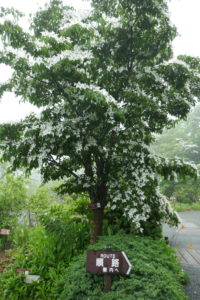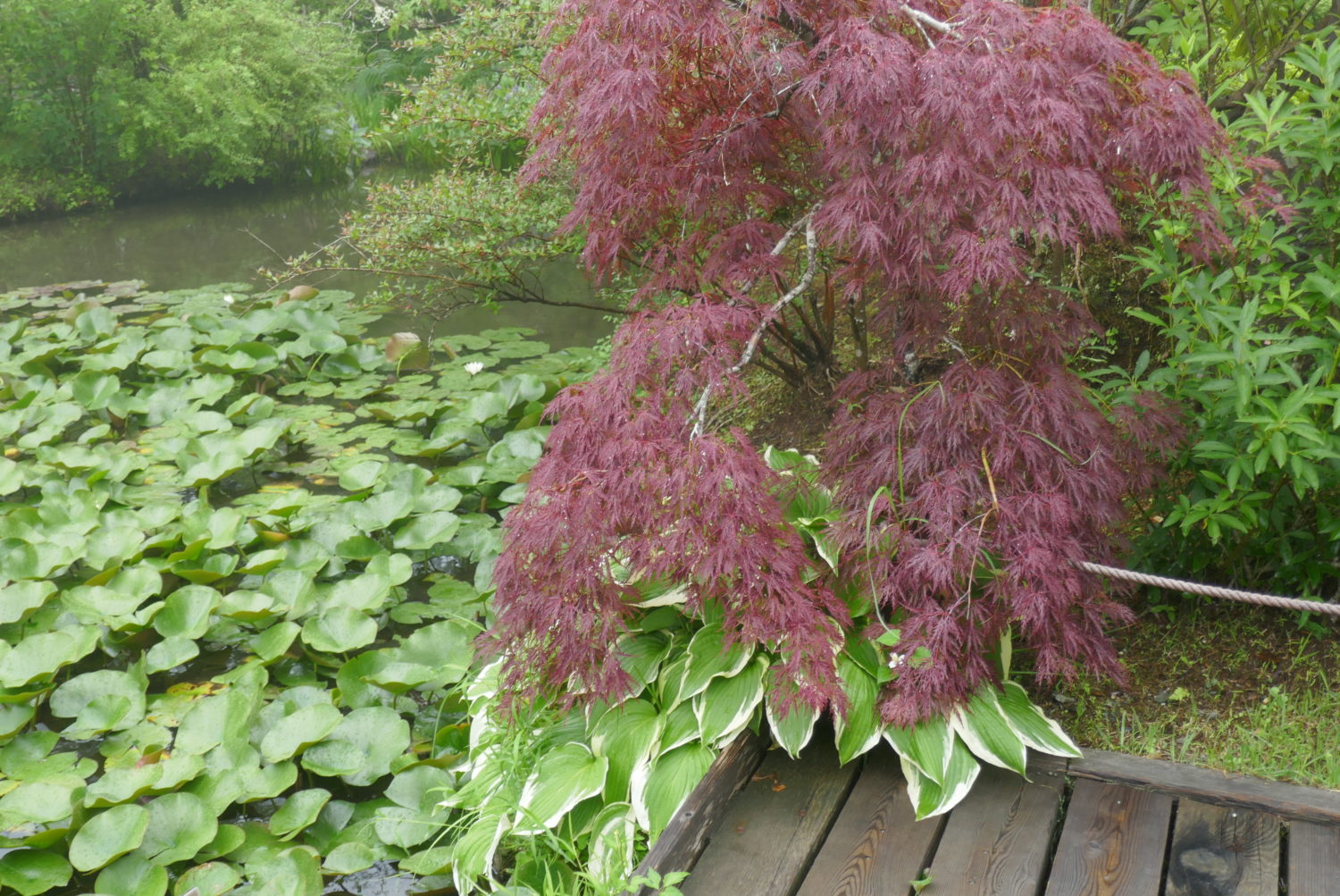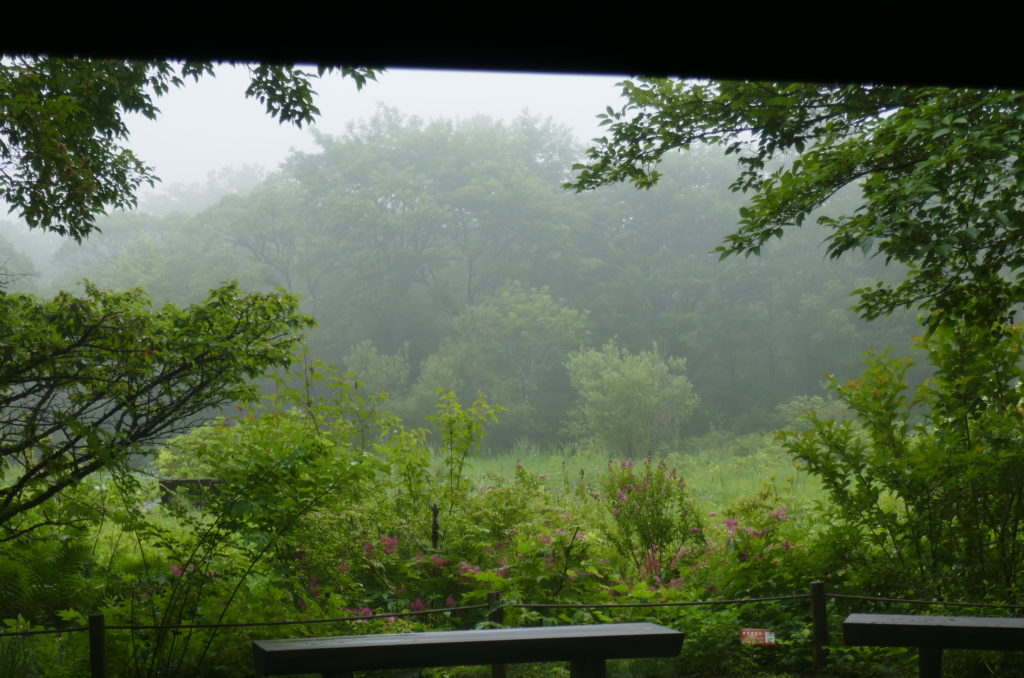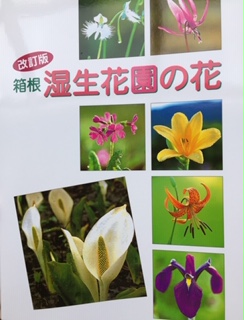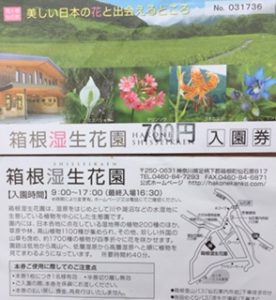Hakone Botanical Garden is unlike any other Botanical Garden we have visited. Once you enter the wetlands it is easy to forget this area was once rice paddies. The layout and planting design have been done so well, it is hard to believe they were man-made, and you are not walking along trails in a natural wetlands area.
With pathways and boardwalks winding through the trees and moors, it feels as if you have the place to yourself. Quiet and serene, the only sounds are from birds and small rustlings in the undergrowth beside the paths. ( I was thinking, please don’t be a snake)
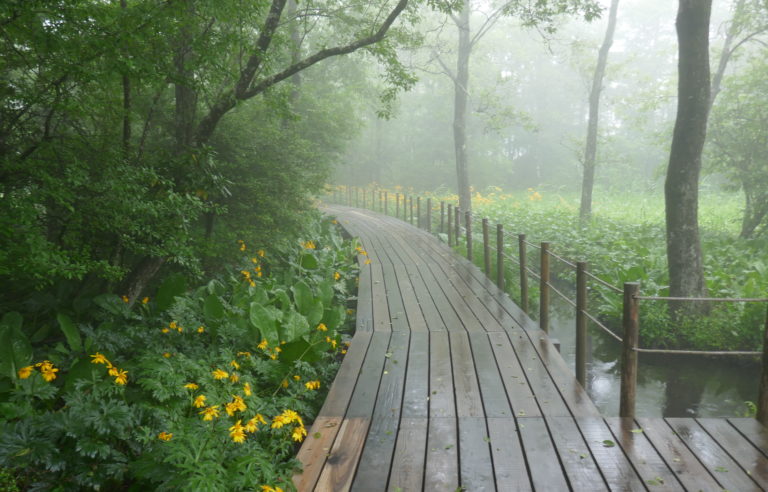
We visited on a drizzly day in Summer and the showers and mist added to the atmosphere.
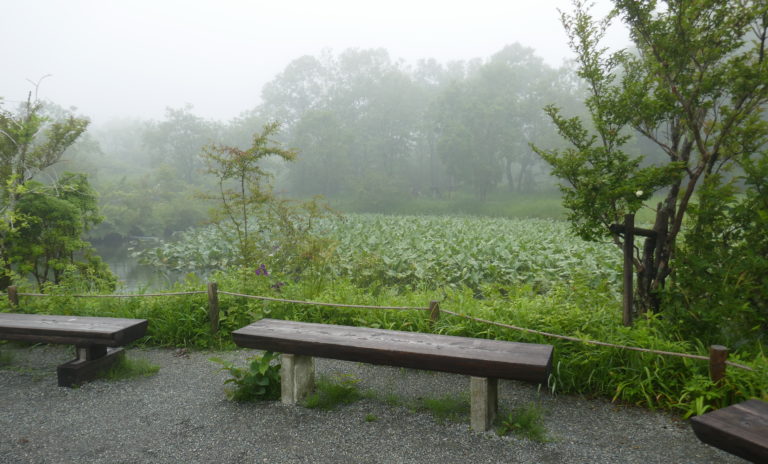
Design of the Hakone Botanical Garden
Hills and rockeries have been built to create eight different areas within the garden. These include moors, forests, a meadow and an alpine garden. With over a thousand different plant species used, you can see many of the plants of the Japanese Wetlands in their natural habitat.
We had half a day to spend in the gardens and could easily have stayed several hours more. Every area was interesting and beautiful in different ways. And with so many plants and flowers catching our attention, our progress was stop-start.

Plants of the Hakone Botanical Garden
It was so exciting to see plants we knew in their natural habitat! And the many we had not seen before meant stopping to take photos or just having a closer look.
We loved every part of these Botanical Gardens but here are some of the highlights for us.
Entry to the wetlands
The area at the start of the walk is laid out in a traditional Botanical gardens style. It was set out as a display garden with specific environments created for different plant groups such as carnivorous plants, water plants and Iris.
A magnificent Cornus kousa, Japanese Dogwood, in full flower highlighted our entrance. There were also several weeping Maples, Hostas, Water lilies and Pieris plus many others.
This area was not at all like the natural wetlands area but was interesting just the same.
Marsh Iris
Iris ensata var. spontanae
It was the Iris that I loved most. Seeing them grouped together, in full flower, was breath-taking. Perhaps it was the strong colours where most of the other plants and flowers were subdued. But they are such regal flowers, I have always thought them special. To me, they say "Welcome to Japan"
We also saw them dotted through the Swamp Forest.
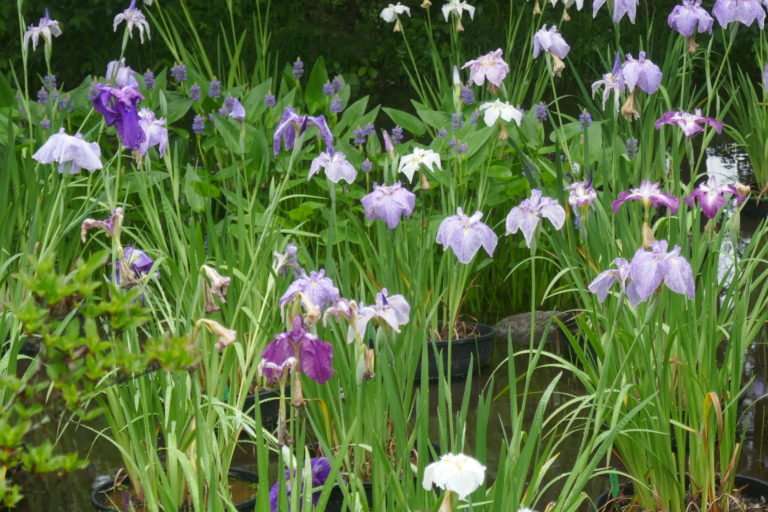

Swamp Hen.
There are places to stop and sit scattered throughout the gardens. We found a thatched roof shelter off the main path with views into the swamp. Before we even saw the shelter, music from someone quietly singing and playing the guitar could be heard through the trees. I am not surprised people are moved to sing or paint or write. It is such a tranquil and beautiful environment.
As we sat and ate our lunch in the shelter out of the misty rain, both quietly enjoying the views and sounds of birds and water dripping through the trees, we noticed a brightly coloured bird walk out of the swamp and into the open area outside the shelter.
It flew up onto one of the benches, looked around, then after wandering on the ground for a few minutes, slowly walked back into the swamp and disappeared.
Appearing as it did from the green and misty swamp, this startlingly coloured bird seemed unbelievable. We felt privileged to have been there to see it.
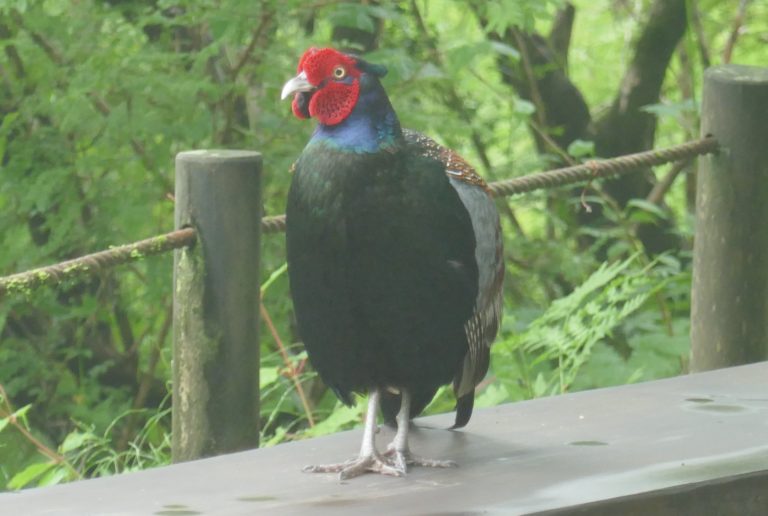
Boardwalks.
As this is a wetland, there are sections where boardwalks have been built just above the swamp. This means you can go into the centre of the marshes and swamp areas without getting wet feet, but still feel immersed in the habitat.
These areas are quite different, and it is worthwhile walking through each section to see the variety of plants grown in the different types of wetland areas of Japan.
“You will find examples of four different types of wetlands: Marsh, fen, bog and swamp” (From Hakone Botanical Garden of Wetlands information brochure) They provide the following definitions. (My explanations in brackets)
Marsh: Eutrophic grasses are dominant. (Plants that can grow in nutrient rich waters and soil.)
Fen: Mesotrophic grasses are dominant. (Plants growing with intermediate nutrients)
Bog: Oligotrophic grasses are dominant. (Plants that grow in nutrient poor water and soil)
Swamp: a marsh where the dominant plants are woody
This makes it sound as though it is a grassy swamp. But there is a huge variety of plants here, from Oaks and Maples to Bleeding Heart, violets and Day Lilies. Many of the plants are labelled with both the Latin and Japanese name.
The boardwalks are sturdy, well-constructed, sympathetic to the environment and very safe to walk.
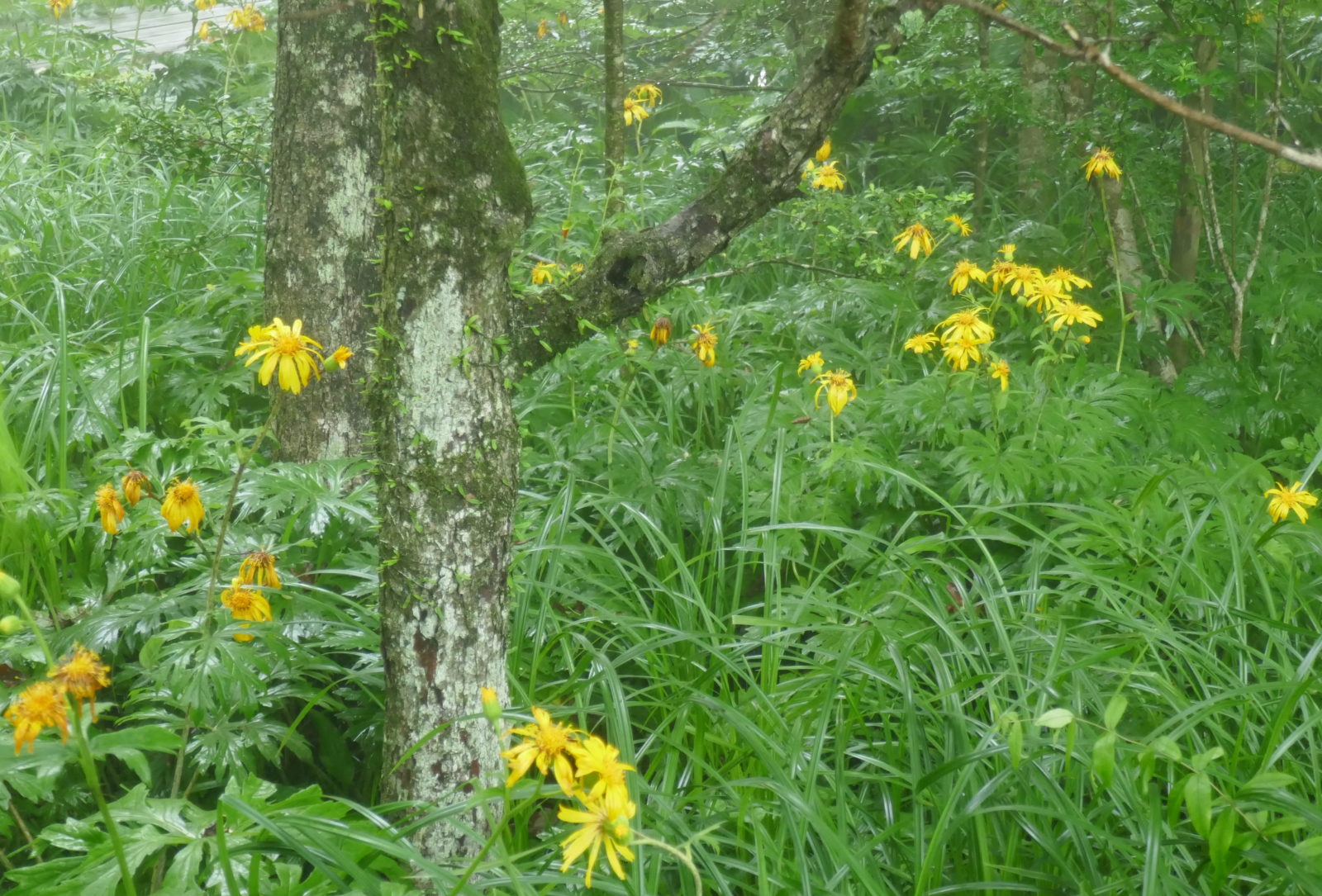

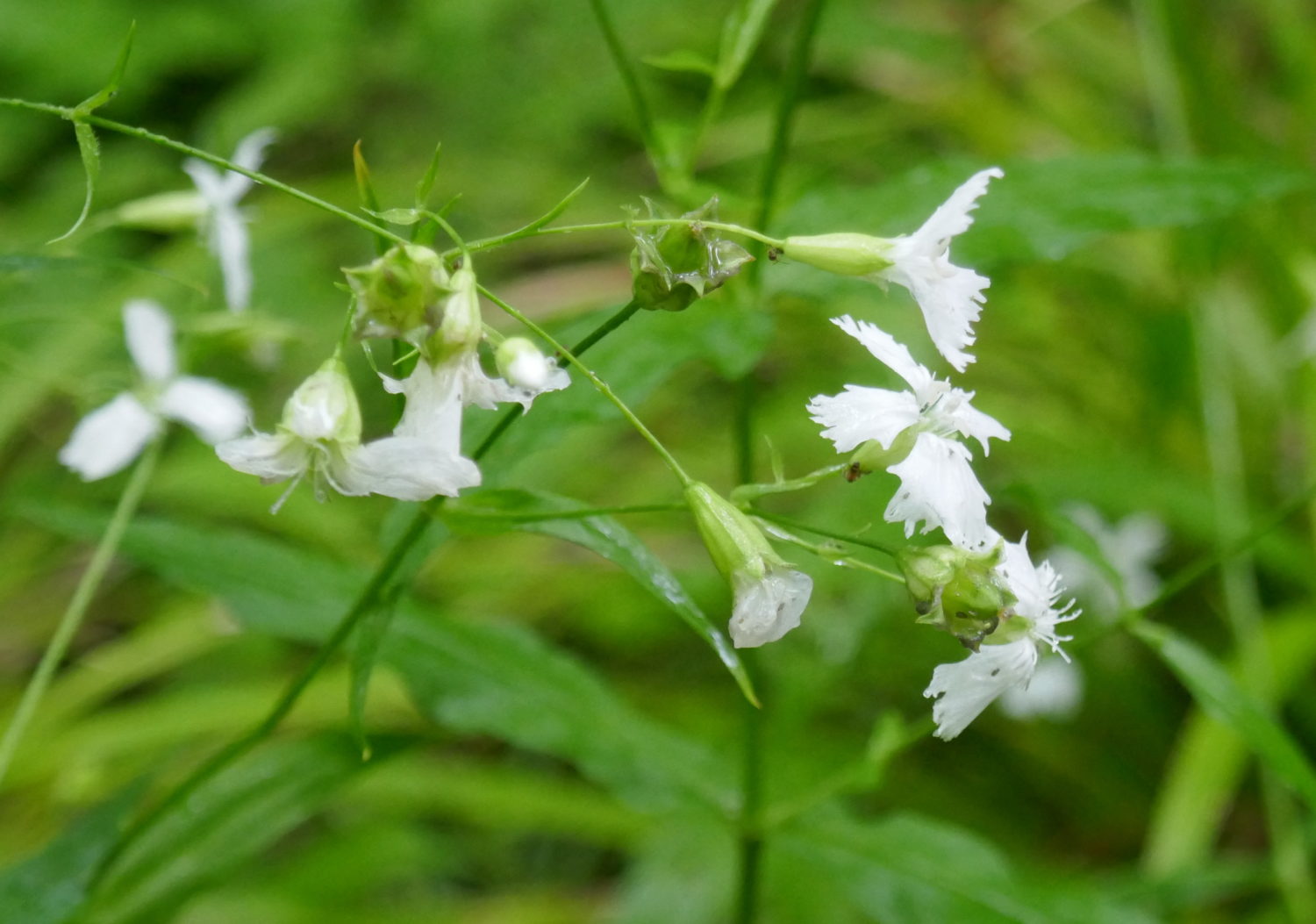

Arrowhead Plant
One of the marshes on the outer boundaries was shrouded in mist which became thicker and lower as we started the walk through. It was eerie not being able to see very far ahead, with the water lapping against the boardwalk and sections of tall grasses along-side.
At first there was little sound, but then we could hear a couple of voices. When the man and woman became visible it appeared he was a tourist guide for the gardens They were crouching down on the boardwalk and he was animatedly showing the woman something in the grasses in front of them. As we came closer, he was eager that we also saw what was apparently a very important find.
He pointed at what looked a quite insignificant flower in among the grasses. I took a photo because I didn't want to seem ungrateful. However, he kept smiling and pointing and saying “Car” and “Automobile” We noticed the leaves of the plant were very unusual, shaped like an arrowhead, but could not see the significance of that.
It wasn’t until much later Peter realised the leaf shape was like the Mercedes Benz emblem. We wonder if that is what the tourist guide had meant. We will never find out, but it was exciting to be included in his enthusiasm.
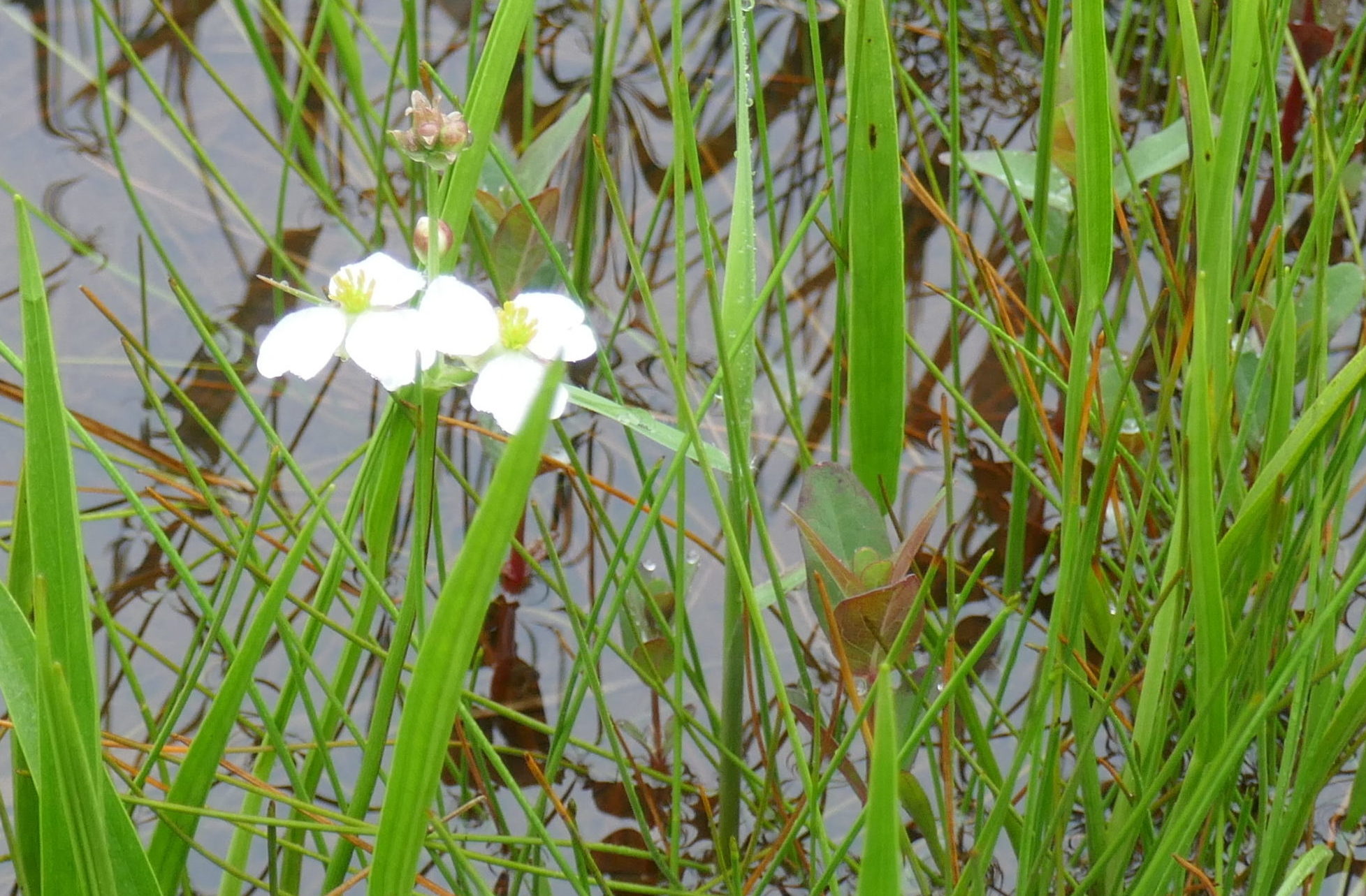

Additional facilities and services
Hakone Botanical Gardens Book
I purchased a book on the plants of the Hakone Botanical Gardens before we left. In it I found the Arrowhead plant: Sagittaria trifolia var. angustifolia.
This book has many coloured photos and lots of information, unfortunately all in Japanese.
But the Latin plant names are included as well as some botanical drawings of plant parts which would be useful in plant identification.
Cover of the Hakone Botanical Gardens book
Plant shop
Just as most Botanical Gardens do, Hakone’s had a selection of plants for sale. In this small nursery I was amazed to see some of the plants were grown as Kokedama. This is method of growing plants I started doing recently, knowing it had a Japanese back-ground, but I hadn’t expected to see them here.
Kokedama means “Moss Ball”. The plant roots are covered in a peat and potting mix which is moulded into a ball. This is then covered in moss and held together with string. The mix holds a lot of water and so makes an excellent choice for Wetland plants
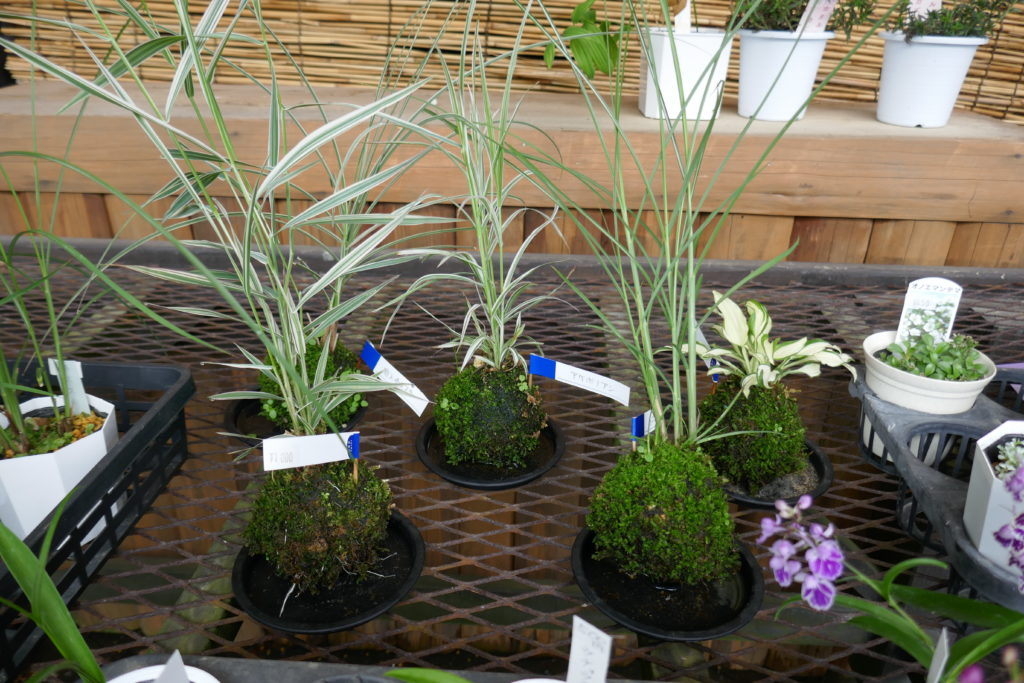
Hakone Botanical Garden
We really didn't know what to expect before visiting the Hakone Botanical Garden of Wetlands - the English translation of Hakone Shissei Ka-en didn't exactly evoke images of a garden wonderland!
But what a treasure it turned out to be.
We loved the structure and design of the gardens, as well as the diversity of plants. The tranquility and serenity created an atmosphere that further enhanced the beauty of the wetlands.
These gardens will appeal to all - an oasis for everyone, a treasure trove for gardeners.
I love looking at the photos in the book from the gardens and the photos we took on the day, and am looking forward to visiting again at a different time of year.
How to get there:There are 2- and 3-day Hakone Travel Passes. These include the return train ride from Shinjuku Station in Tokyo to Odawarra, and unlimited use of most transport options from Odawarra and around Hakone. (Train, most buses, Cable Car, Pirate Ship) If you have a JR Rail Pass, use the Shinkansen to Odawarra. From there you can purchase a Hakone Travel Pass that is cheaper because it doesn't include the trip from Tokyo. From Odawarra, use the trains to Gora, then catch a bus which takes you right to the gardens. Alternatively take a bus from Odawarra which will take you most of the way. You will have an five-minute walk to the gardens from the bus stop. Opening hours: 9.00 – 5.00pm most of the year except Winter. Check the Hakone Botanical Website for up-to-date information. Entry fee was 700Jpy which gives you one of the lovely keepsake tickets Facilities:At the entrance is a modern building with seating, toilet facilities and lockers. It includes information and photos of plants and animals found in the wetlands. There are souvenirs for sale and several food vending machines. Umbrellas are available to use if the day is wet. Small range of plants for sale |
If you are interested to visit other gardens, read this article
